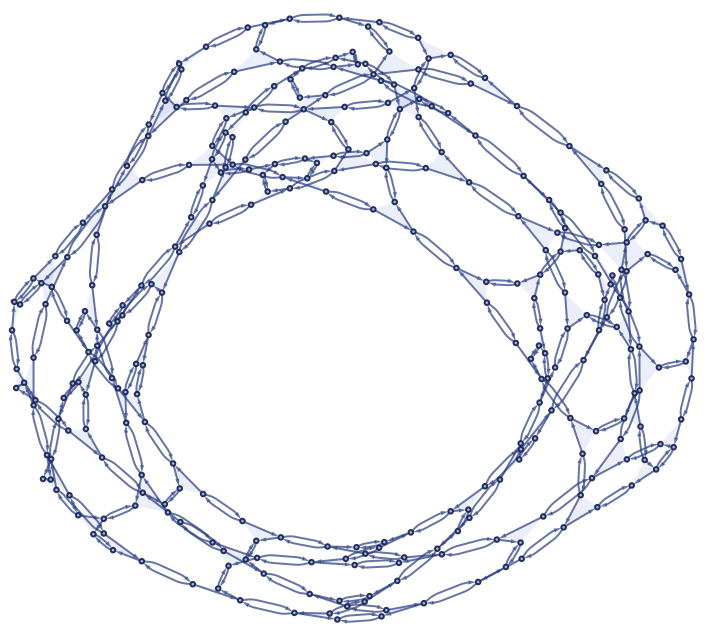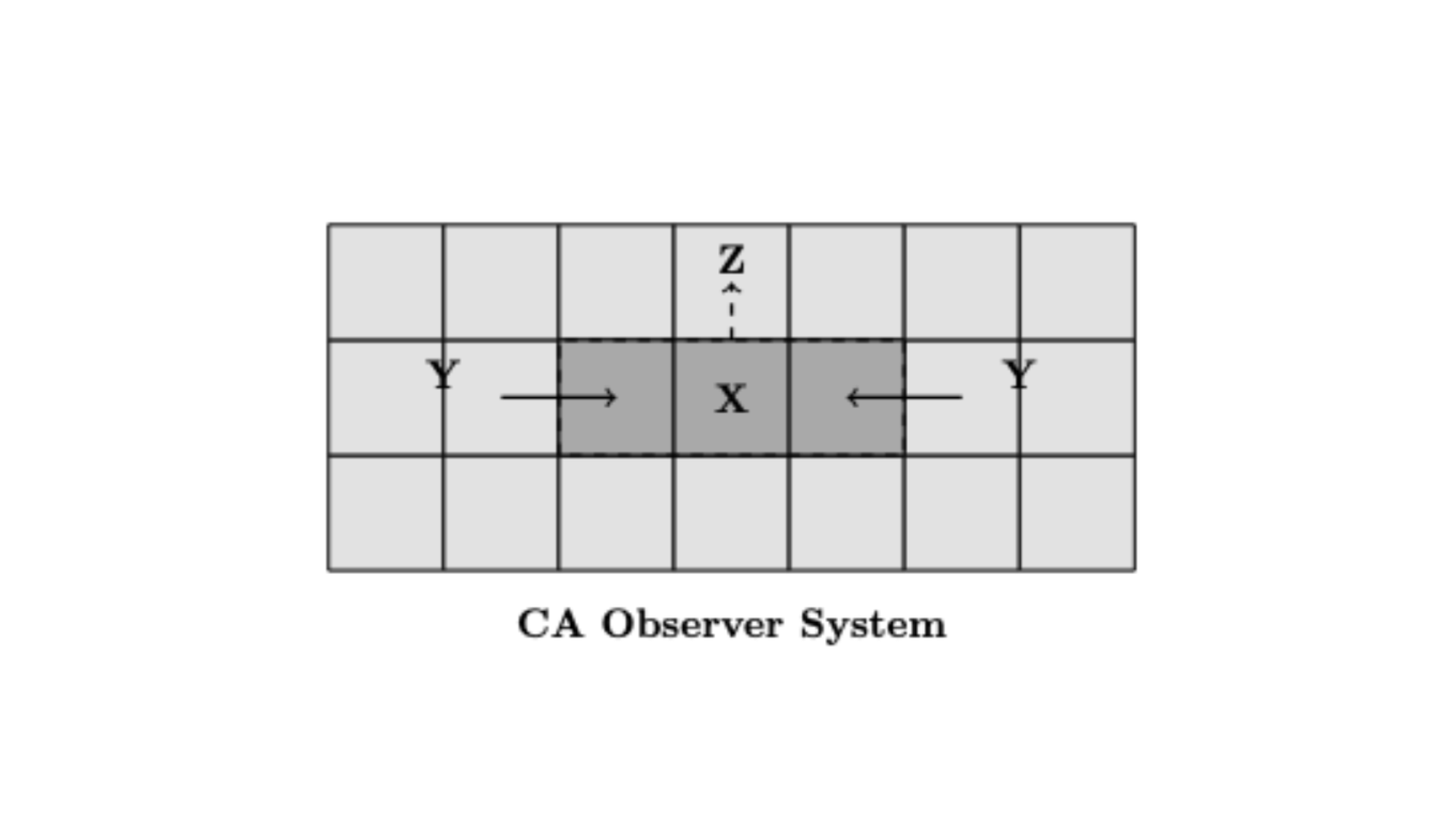Institute Output

What’s Special about Life? Bulk Orchestration and the Rulial Ensemble in Biology and Beyond
Stephen Wolfram
It’s a key feature of living systems, perhaps even in some ways the key feature: that even right down to a molecular scale, things are orchestrated. Molecules (or at least large ones) don’t just move around randomly, like in a liquid or a gel. Instead, what molecular biology has discovered is that there are endless active mechanisms that in effect orchestrate what even individual molecules in living systems do. But what is the result of all that orchestration? And could there perhaps be a general characterization of what happens in systems that exhibit such “bulk orchestration”?

Quantum Gravity and Computation: Information, Pregeometry, and Digital Physics
Dean Rickles, Xerxes D. Arsiwalla, Hatem Elshatlawy
This volume argues that concepts from the theory of computation—including information theory, formal languages, and discrete structures—might provide novel paths towards a solution to the problem of quantum gravity. By combining elements of physics with computer science and mathematics, the volume proposes to transform the foundations of spacetime physics and bring it into the digital age.

Upper Bounds on the Chromatic Index of Linear Hypergraphs
Thomas Murff, Xerxes D. Arsiwalla
This work studies upper bounds on the chromatic index of linear, loopless hypergraphs. The first bound is derived using a color-preserving group acting on a properly and minimally edge-colored hypergraph, where the group’s orbits create a finer partition of the coloring. This provides an upper bound on the chromatic index. The following results examine combinatorial properties of hypergraph coloring and outline a possible approach to the Berge–Füredi conjecture, linking the chromatic index to the maximum degree of the associated graph plus one. Three sufficient conditions are also identified for the conjecture to hold, involving the Helly property for hypergraphs.

The Ruliology of Lambdas
Stephen Wolfram
It’s a story of pure, abstract computation. In fact, historically, one of the very first. But even though it’s something I for one have used in practice for nearly half a century, it’s not something that in all my years of exploring simple computational systems and ruliology I’ve ever specifically studied. And, yes, it involves some fiddly technical details. But it’ll turn out that lambdas—like so many systems I’ve explored—have a rich ruliology, made particularly significant by their connection to practical computing.

Human Language and Machine Language
The explosion of large language models means that we are all suddenly awash in machine-generated language, spoken, written and even sung. There are many advantages to the artificial intelligence produced like this, and many disadvantages too: it remains to be seen what the eventual outcome will be. But there is one particular idea that keeps bubbling up to the surface: that AI is going to decide to kill us all. This, I suggest, is based on a misunderstanding of the nature of language.

“I Have a Theory Too”: The Challenge and Opportunity of Avocational Science
Stephen Wolfram
Most physicists term people who send such theories “crackpots”, and either discard their missives or send back derisive responses. I’ve never felt like that was the right thing to do. Somehow I’ve always felt as if there has to be a way to channel that interest and effort into something that would be constructive and fulfilling for all concerned. And maybe, just maybe, I now have at least one idea in that direction.

Towards a Theory for the Speed of Biological Evolution
Willem Nielsen
An exploration of whether general principles govern the speed of evolution. Modified cellular automata models inspired by Stephen Wolfram are used to examine how genome dimensionality and the number of viable solutions influence rapid evolutionary bursts resembling punctuated equilibrium.

SetReplace
Max Piskunov
SetReplace is an open‑source Wolfram Language package that executes set‑substitution systems. It evolves user‑defined rules from an initial state and returns structured objects that expose events, causal dependencies, and branching dynamics for analysis and visualization.

Kolmogorov Complexity vs. Computational Irreducibility: Understanding the Distinction
James K. Wiles
Kolmogorov complexity and computational irreducibility describe two kinds of limits on simplification, but they apply in different ways. Kolmogorov complexity measures the shortest possible description of an object, such as a string. Computational irreducibility refers to processes that cannot be predicted or accelerated. This paper introduces each concept, explains their theoretical distinction, and illustrates the difference using simple examples.

Computational Metaphysics: A Survey of the Ruliad, Observer Theory and Emerging Frameworks
James K. Wiles
A concise survey of how recent computational models, such as the ruliad and observer theory, are transforming metaphysical questions into formal, testable frameworks.

What If We Had Bigger Brains? Imagining Minds beyond Ours
Stephen Wolfram
We humans have perhaps 100 billion neurons in our brains. But what if we had many more? Or what if the AIs we built effectively had many more? What kinds of things might then become possible? At 100 billion neurons, we know, for example, that compositional language of the kind we humans use is possible. At the 100 million or so neurons of a cat, it doesn’t seem to be. But what would become possible with 100 trillion neurons? And is it even something we could imagine understanding?

Observer Theory and the Ruliad: An Extension to the Wolfram Model
Sam A. Senchal
This paper introduces a rigorous category-theoretic extension to Observer Theory within Wolfram's Ruliad framework, demonstrating how observers and observes like us sample and integrate information across hierarchical domains, addressing consciousness, causation, and the transition from discrete computational processes to continuous perceived reality.

Towards a Generalized Theory of Observers
Hatem Elshatlawy, Xerxes Arsiwalla
A proposal of a formal framework for understanding and unifying the concept of observers across physics, computer science, philosophy, and related fields.

Non-Equilibrium Dynamics of Hard Spheres in the Fluid, Crystalline, and Glassy Regimes
Xerxes D. Arsiwalla, Matthew Kafker
An investigation of the response of a system of hard spheres to two classes of perturbations over a range of densities spanning the fluid, crystalline, and glassy regimes within a molecular dynamics framework.

What Can We Learn about Engineering and Innovation from Half a Century of the Game of Life Cellular Automaton?
Stephen Wolfram
Things are invented. Things are discovered. And somehow there’s an arc of progress that’s formed. But are there what amount to “laws of innovation” that govern that arc of progress?
There are some exponential and other laws that purport to at least measure overall quantitative aspects of progress (number of transistors on a chip; number of papers published in a year; etc.). But what about all the disparate innovations that make up the arc of progress? Do we have a systematic way to study those?

Nature's Compass: A visual exploration of hierarchy in biology and beyond
Willem Nielsen
A discussion of the computational essence of hierarchy in biology and its potential implications for everyday life.

Towards a Computational Formalization for Foundations of Medicine
Stephen Wolfram
As it’s practiced today, medicine is almost always about particulars: “this has gone wrong; this is how to fix it”. But might it also be possible to talk about medicine in a more general, more abstract way—and perhaps to create a framework in which one can study its essential features without engaging with all of its details?

Who Can Understand the Proof? A Window on Formalized Mathematics
Stephen Wolfram
For more than a century people had wondered how simple the axioms of logic (Boolean algebra) could be. On January 29, 2000, I found the answer—and made the surprising discovery that they could be about twice as simple as anyone knew. (I also showed that what I found was the simplest possible.)

Preons, Braid Topology, and Representations of Fundamental Particles
David Chester, Xerxes D. Arsiwalla, Louis H. Kauffman
Braided ribbon topology for representing Standard Model fermions and their interactions

Identifying and Manipulating Personality Traits in LLMs Through Activation Engineering
Rumi A. Allbert, James K. Wiles
An exploration into the latent space of Large Language Models to find and steer the personality of Generative Artificial Intelligence
